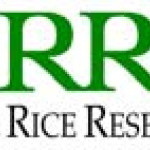- Industry: Agriculture
- Number of terms: 29629
- Number of blossaries: 0
- Company Profile:
DNA amplification method which uses single primers. Method is restricted to primers 9 nucleotides and larger, and amplification products are generally visualized using agarose electrophoresis and ethidium bromide fluorescence.
Industry:Agriculture
A measure of the degree of acidity or alkalinity of a soil or solution. A pH of 7.0 is neutral, below 7.0 is acidic, and above 7.0 is alkaline or basic. It is the negative logarithm of the hydrogen ion concentration of a soil or solution.
Industry:Agriculture
potential evapotranspiration; the loss of moisture by direct evaporation and transpiration from vegetation; a pressure measured in mm.
Industry:Agriculture
Photosynthetic aquatic biomass; the mass of plants and algae which photosynthesize in the water.
Industry:Agriculture
A chain of single-stranded ribonucleotides that codes for a specific protein. Product from DNA by transcription which serves as the information carrier for translation into proteins in the ribosomes..
Industry:Agriculture
1). Law of independent segregation: Hereditary traits are determined by discrete factors (now known as genes) that appear in pairs, one of each pair being inherited from each parent. During meiosis, the pairs of factors are separated or segregated. Hence, each gamete that is produced by an offspring at maturity contains only one member of each pair that the offspring produces. 2). Law of independent assortment: When two pairs of alleles are brought together in a hybrid combination, they will segregate independently from each other in the F2 itself.
Industry:Agriculture
